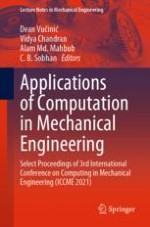This volume includes select peer reviewed proceedings from the 3rd International Conference on Computing in Mechanical Engineering (ICCME 2021) discussing the application of computer based simulations in mechanical and allied engineering disciplines. The book shows advanced applications of numerical techniques in different areas of mechanical engineering. The topics covered include numerical modelling, simulations and optimization best practices in various challenging domains like fluid dynamics, combustion in IC engines, heat transfer analysis, vibration damping and control, chemical and process engineering, mechanics of machining, nano fluidics and material science. This book will be a useful resource to students, researchers and engineers working on multidisciplinary engineering problems, specially focusing on mechanical engineering and applied mathematics issues, with hope that it will impact future developments in engineering disciplines and motivate advancements and innovations in technical sciences.
